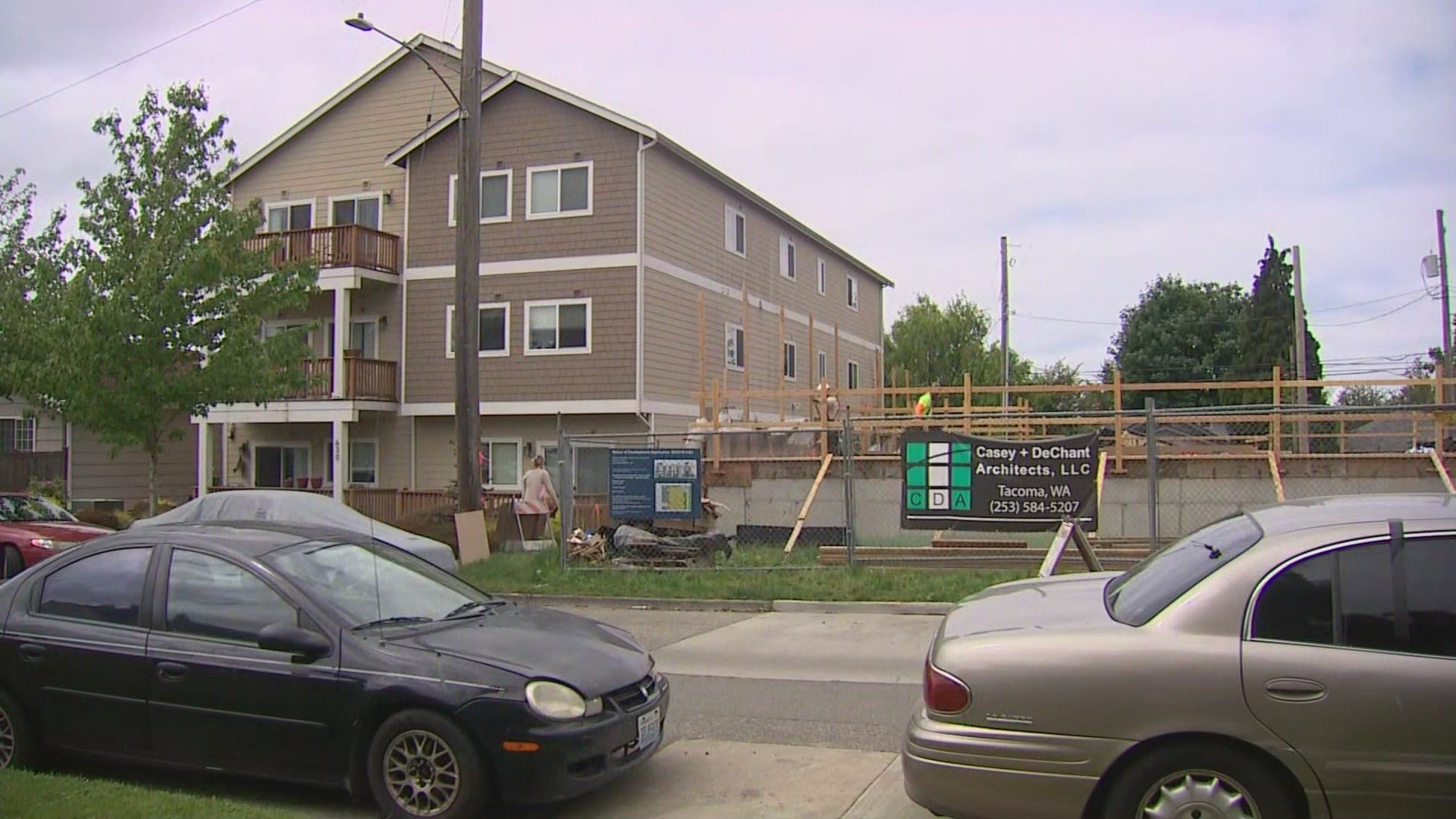TACOMA, Wash. — Tacoma’s rush to bring more housing to the city may not be having the intended effect.
Bradley Smith, who used to live in Tacoma before moving to University Place, saw what life was like with developers next door when he used to live in the city.
“We went on a family vacation and we came home and saw our water line was broken by some of their construction equipment. So in the middle of the night I’m on the phone with city utilities, trying to figure out if we can get that repaired by the next morning when we had a child in diapers,” Bradley said.
At the end of the project, Bradley found that his former home was surrounded by condos, which brought higher property taxes, no equity, and no sun.
“They were three stories tall, they were to the south of us, so they completely blocked sunlight,” he recalls. “We weren’t able to grow vegetables in our garden like we used to, and from our baby’s room, we weren’t able to see the night or see the moon pass by anymore.”
Bradley’s story is playing out in neighborhoods across Tacoma as developers buy up vacant lots to set up multi-family housing.
The initial idea was to provide enough housing for people in Tacoma, but as the new homes are built, more and more of them are being occupied by people who lived outside of Tacoma and Pierce County.
So what happens to the people already living in Tacoma who need to be housed?
“That’s a tough question, but a good one, because you’re getting at one of the fundamental issues with our housing crisis, which is displacement,” said Jacques Colon, a 2025 strategic planner for the City’s Manager’s Office. “How do we make sure that the people who have been living in these neighborhoods, who really form the fabric of these neighborhoods, are not pushed out as the city grows and develops?”
Some say the answer can be as simple as making sure the community is involved.
“This is a basic tenet of community development: you engage and involve the community that will be impacted,” said Pamela Duncan, CEO of the Metropolitan Development Council. “You seek the voices and the input of those who are going to be affected at the end of the day so that the community can feel ownership instead of being put upon.”
Tacoma officials say this is a complex problem that has to be solved on multiple levels, such as encouraging businesses that provide livable-wage jobs to move to Tacoma, and providing assistance and resources to those looking to enter the housing market. But they hope the benefit of more homes overall will outweigh the negative impact of development that’s being felt right now as the city grows.
In the meantime, Bradley has a warning for his former neighbors that this issue is bigger than some may realize.
“It’s trickling down I-5, where each community is pushing a group of people out, and the next community pushes another group of people out, and I’m worried about all of the communities in Tacoma that are being misled by their leadership into believing that these developments are for them," he said. "Even if there’s rent subsidized properties, those properties are largely unaffordable and they’re going to be occupied by someone outside of the community.”

